With The Jungle Book's release this week, travel junkie Priyanka Jena hits the trail inside Simlipal National Park to share her encounters in the wild
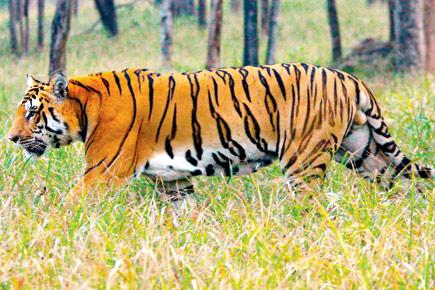
A tiger spotted at Simlipal National Park, Orissa.
![]() Orissa is a paradise for naturalists. The state is rich in biodiversity and is home to rare natural phenomenon. I decided to spend the last day of 2015 in India’s largest forest reserve block, Simlipal National Park in Orissa. The park also happens to be one of the earliest of India’s 15 Tiger reserves that fall under Project Tiger.
Orissa is a paradise for naturalists. The state is rich in biodiversity and is home to rare natural phenomenon. I decided to spend the last day of 2015 in India’s largest forest reserve block, Simlipal National Park in Orissa. The park also happens to be one of the earliest of India’s 15 Tiger reserves that fall under Project Tiger.
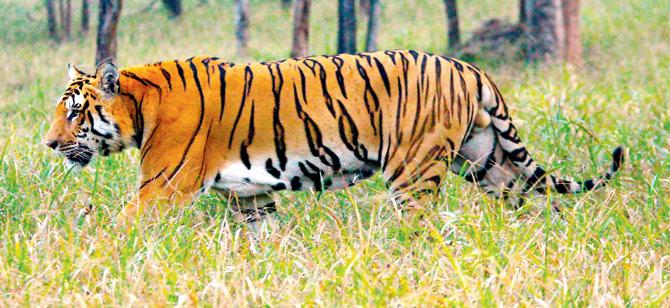
A tiger spotted at Simlipal National Park, Orissa. Pics courtesy/Priyanka Jena
ADVERTISEMENT
The forest is breathtaking and spread over a whopping 2,271 km. The entry to the park is cheap and you can take your own car whilst a park naturalist accompanies you. It takes about seven hours to enter the park from one end and exit from the other. Set on a wide expanse of sal forest, the park is nestled in the centre of Mayurbhanj, the northernmost district of Orissa.
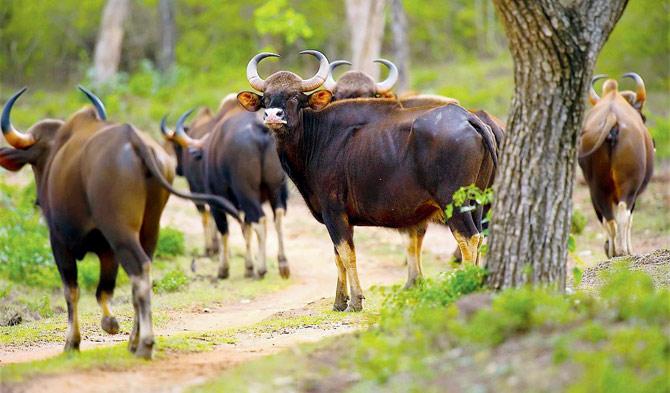
Bisons at the park
What to see
Simlipal hosts a population of tigers, leopards, elephants, chital and sambar. The reserve is endowed with exceptional biodiversity. Of the reserve’s almost 1,000 species of flowering plants, 94 are orchids. With 304 species of birds, Simlipal is fabulous for birding. Birdwatching trips can be organised from Gurguria, Jamuani, Jashipur and Pithabata.

Priyanka Jena at Sitakund
There are various spots within the forest that you can hike to and explore on foot with a park naturalist. There are also waterfalls where you can picnic at. I went trekking to Sitakund, which is next to the park in a zone called Lulung. If you’re keen to get into adventure mode, this place is ideal for rock climbing. This trail is great for experienced and beginner trekkers. According to Hindu mythology, Sita used this place as her private bathing area. The beautiful natural waterfalls have formed cosy lagoons at different levels of the rocky mountains. The place is filled with giant boulders that make for a fun playground for the adventurer in you. Sitakund is famous for its waterfall, which is situated at the base of Similipal hill about 20 km from Baripada. There is also a natural cave temple of Maa Banadurga here. If the chilly water does not deter you from taking a dip, this spot is great for a swim in crystal clear waters.
Apart from the Sitakund trek, trekking is possible from Brundaban to Chahala and back (6 km). You can also trek from Uski village to Uski waterfall and back. The main spots within the reserve are Barehipani, Joronda, Gurgudia Orchidarium and Chahala.
If you begin the tour at around 7 am from the Jashipur entry gate you will be able to cover Gurguria orchidarium, then Uski waterfall, Joronda waterfall, Barehipani waterfall, tuck into lunch at Barehipani, before visiting the final tourist point, at Chahala.
Priyanka Jena, founder, travel company The Holiday Studio. To sign up for similar trips log on to www.theholidaystudio.com
SOUTH: Nagarhole, Karnataka
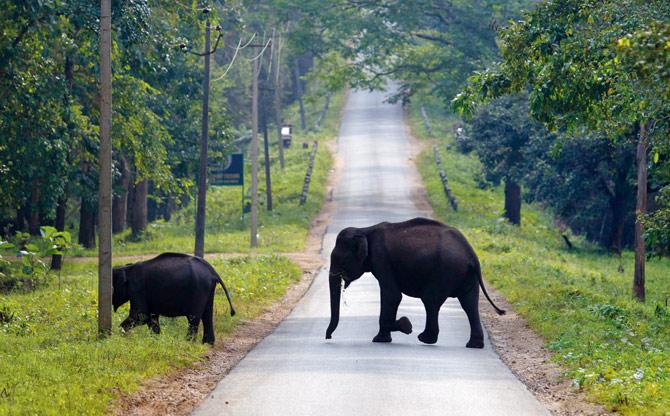
Nagarhole National Park, is located in Kodagu district and Mysore district. The park is part of the Nilgiri Biosphere Reserve. Together with the adjoining Bandipur National Park, Mudumalai National Park and Wayanad Wildlife Sanctuary, it forms the largest protected area in Southern India, totalling 2,183 km. You can spot the Bengal Tiger, Indian bison and Indian elephants at the park. It is also popular for the Malabar Grey Hornbill and the White-Bellied Treepie.
Log on to: www.nagarahole.com
NORTH: Corbett, Uttarakhand

Jim Corbett National Park, which is a part of the larger Corbett Tiger Reserve, a Project Tiger Reserve, is located in the Nainital district of Uttarakhand and was established in 1936 as Hailey National Park. Spread across 520 sq km, the area includes hills, marshy depressions, riverine belts, grasslands and a large lake. It is among the few tiger reserves in India that allows overnight stays in the heart of the national park. Also look out for otters and crocodiles. Corbett and its adjoining area is home and host to more than 650 species of residents and migratory birds.
Log on to: www.sunderbannationalpark.in
CENTRAL: Tadoba, Maharashtra
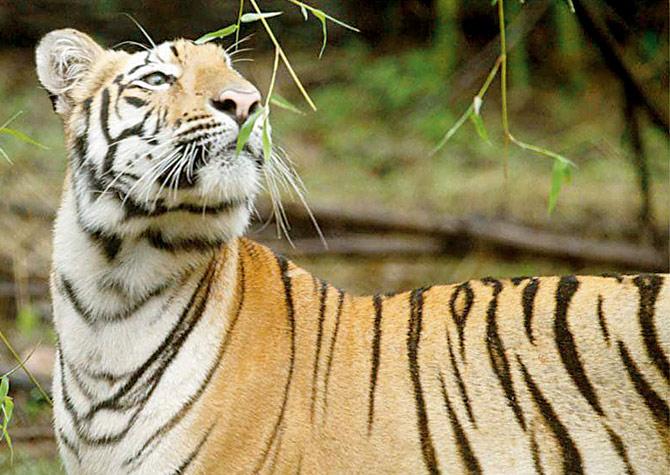
Closest for Mumbaikars, Tadoba lies in the Chandrapur district and is about 150 km from Nagpur which is the nearest airport. Tadoba comes from the name of deity Tadoba, worshiped by local tribes. Teak is the prominent tree species here. Most of the forest is in a hilly area which covers the Chimur Hills, Moharali and Kolsa ranges. Tadoba is popular for its tiger and leopard spotting as well as birdwatching.
Log on to: www.tadoba-national-park.com
Pench, Madhya Pradesh
Pench National park, nestled in the Satpuda hills is named after the Pench river. It is located on the southern boundary of Madhya Pradesh, bordering Maharashtra, in the districts of Seoni and Chhindwara. The Park is spread across 758 sq km, of which a core area of 299 sq km is the national park and remaining 464 sq km is the buffer area. It is said that the area of the present Pench Tiger Reserve has been described in Ain-i-Akbari, and is the setting of Rudyard Kipling's The Jungle Book. You can also spot the four horned antelope, wild dogs and rare birds at the park.
Log on to: www.penchnationalpark.com/
WEST: Ranthambore, Rajasthan
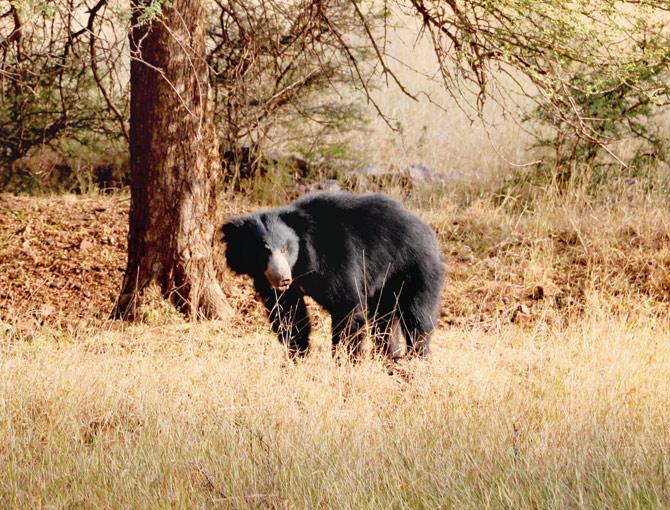
The most popular and also the most commercial of national parks, Ranthambore is located in the Sawai Madhopur district. A former hunting ground of the Maharajas of Jaipur, the park is home to striped hyenas, sambar, chital, nilgai, jackals, sloth bears, yellow bats, Indian foxes and a variety of birds. The park offers luxury camps as well as resorts. Choose between a canter and gypsy to track the tiger.
Log on to: www.ranthamborenationalpark.com
EAST: Sunderbans, West Bengal
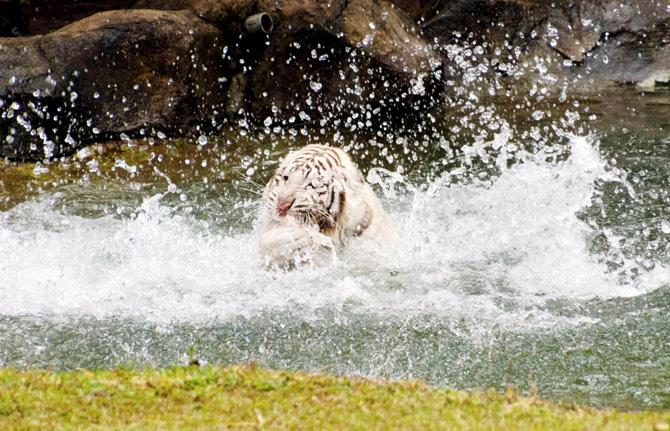
The Sundarbans are part of the world’s largest delta, formed by the rivers Ganga, Brahmaputra and Meghna. The region gets its name from one of the mangrove plants called Sundari. Spread over 4,262 sq km (in India), with a larger portion in Bangladesh, the park claims to be the largest tiger reserve and national park in India and is home to the Royal Bengal Tiger, Indian rhino and salt-water crocodiles.
Log on to: www.sunderbannationalpark.in
 Subscribe today by clicking the link and stay updated with the latest news!" Click here!
Subscribe today by clicking the link and stay updated with the latest news!" Click here!







